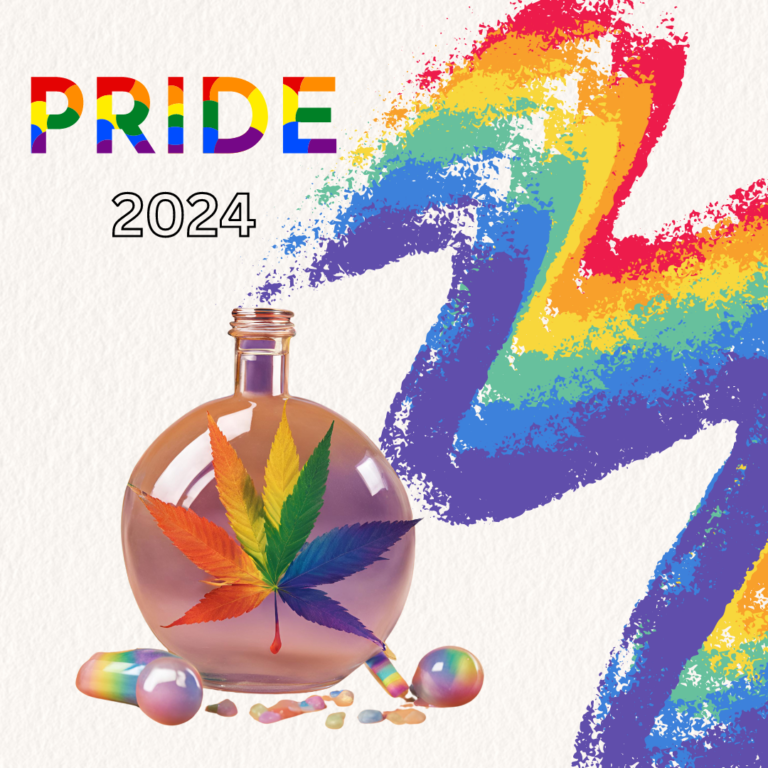
National Cleft and Craniofacial Awareness & Prevention Month
Mid-Month HC & GN Updates from Nurse Sherri July marks National Cleft and Craniofacial Awareness and Prevention Month. Children with cleft lip, palate, or other
Home » Blog » Medical Cannabis » Celebrate Pride Month by acknowledging the historical intersection of LGBTQIA+ activism and Medical Cannabis

The movement for medical cannabis, an instrumental part of modern healthcare, has a lineage deeply rooted in the struggle of the LGBTQIA+ community. During Pride Month, we pay tribute to the queer activists whose efforts not only secured rights for their community but also led to the rise of the medical cannabis movement (Monovitch, 2017).
The story begins in June of 1969 during the Stonewall Riots—an uprising initiated due to police harassment of gay and transgender individuals in lower Manhattan. This pivotal moment marked a turning point in the national movement for queer liberation. Key figures from this movement included Stormé DeLarverie and Marsha P. Johnson (Bellware, 2019).
Simultaneously, in Washington D.C., President Nixon requested Congress to draft the Controlled Substances Act, categorizing psychedelic drugs of the ’60s, including cannabis, as the most dangerous drugs known (Dickinson, 2016). The trajectories of struggles faced by the LGBTQIA+ community and cannabis took a dramatic turn during the tenure of another conservative president, Ronald Reagan.
The HIV & AIDS crisis laid the ground for cannabis legalization. In June 1981, the CDC reported the first known cases of HIV & AIDS in the United States. The Reagan administration’s lack of significant response coincided with a surge in homophobic attitudes (Cohen, 2020). This crisis caused profound distress within the LGBTQ+ community, as individuals watched their loved ones succumb to the disease.
Yet, the queer community fought against the odds. Many patients and caregivers started using cannabis, noting it eased symptoms associated with HIV & AIDS (Corless et al., 2009). Mary Rathbun, also known as Brownie Mary, became a notable figure by selling cannabis-infused brownies throughout San Francisco’s Castro District.
The Castro District served as a sanctuary for LGBTQ+ veterans to live openly about their sexuality. It was here that Harvey Milk, a public advocate for cannabis, was elected to public office. Following Milk’s assassination, Dennis Peron, another veteran and cannabis advocate, pushed for Proposition P, which paved the way for medical cannabis legalization in California (Corless et al., 2009). Peron later opened the first public medical cannabis dispensary, marking a significant milestone in the fight for cannabis legalization and medical access.
The passage of Proposition 215, also known as the Compassionate Use Act of 1996, was the culmination of these efforts. This milestone marked the legal availability of medical cannabis to patients in California, two decades after the Stonewall Riots (Corless et al., 2009).
Today, the LGBTQIA+ community still faces pervasive health concerns such as Post-Traumatic Stress Disorder (PTSD) and Substance Use Disorders (SUDs). Queer individuals are at a higher risk for these conditions and face multiple barriers to healthcare, including homophobia, transphobia, and discriminatory policies (Gonzalez et al., 2015).
Cannabis is now available for both medical and recreational use in most states, enabling many LGBTQIA+ individuals to seek relief from debilitating conditions. This access stands as a testament to the tireless efforts of queer activists who filled the void left by federal, state, and local authorities.
As you purchase cannabis, remember that the community that fought so hard for marijuana legalization is still grappling with the erosion of their legal rights. It is essential to stand with them against these injustices. Let us not forget this unique aspect of legal cannabis’s history and honor it.
By understanding the intertwined histories of LGBTQIA+ activism and medical cannabis, we can appreciate the progress made and continue to support both movements. This Pride Month, let’s celebrate these victories while remaining vigilant in our advocacy for equality and improved healthcare access for all.
References:

Mid-Month HC & GN Updates from Nurse Sherri July marks National Cleft and Craniofacial Awareness and Prevention Month. Children with cleft lip, palate, or other

Many individuals have expressed the opinion that there is a notable lack of research in the field of cannabis therapeutics, and we are inclined to

How CBD Helps with Men’s Health & Psychological Wellness An increasing number of men are proactively addressing their overall well-being, acknowledging the importance of
Holistic Caring® is an umbrella of progressive health professionals who provide products & services to support and nourish the endocannabinoid system.
We serve the plant, the people and the planet for hope and inspiration for growth and healing to the patients we serve and the practitioners we work with.
We provide Educational Programs & Nurse Coaching Services.
Contact
© 2024 All rights reserved – Content Agreement – Privacy Policy – Terms – Accessibility Statement–Returns/Shipping/Cancellation
